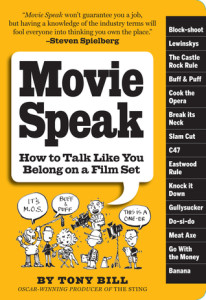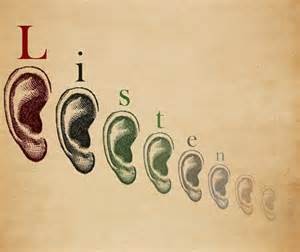By Marci Liroff
I believe that you should become a student of the cinema. You should be a walking talking library of films. There are SO many films that you should see not only for reference, but to become a well-rounded actor.
It is crucial to you to become an actor with range by watching old movies. I’d like you to become a walking/talking film library . You may come across a director in an audition situation or on-set who, rather than being able to articulate what she is looking for, will give you an example of a character in a classic (or not so classic) film. Since you’re a student of cinema, you will know exactly what she’s referring to.
I’ve compiled a few lists of my favorite American Films from the Sixties to the Nineties.
I’m sure I’ve missed A LOT!
Let me know what I should add to the list!
SIXTIES
2001: A SPACE ODYSSEY
THE BIRDS
BONNIE & CLYDE
BREAKFAST AT TIFFANY’S
BUTCH CASSIDY & THE SUNDANCE KID
BYE BYE BIRDIE
THE MUSIC MAN
WEST SIDE STORY
DR. ZHIVAGO
DR. STRANGELOVE
THE DIRTY DOZEN
EASY RIDER
FUNNY GIRL
GOODBYE, MR. CHIPS
GUESS WHO’S COMING TO DINNER?
LOLITA
MY FAIR LADY
PATTON
THE PINK PANTHER
PSYCHO
ROMEO & JULIET
SPLENDOR IN THE GRASS
WAIT UNTIL DARK
SEVENTIES
A CLOCKWORK ORANGE
ALICE DOESN’T LIVER HERE ANYMORE
ALIEN
ALL THAT JAZZ
AMERICAN GRAFITTI
ANNIE HALL
ROSEMARY’S BABY
BREAKING AWAY
CARRIE
CATCH-22
CHINATOWN
CLOSE ENCOUNTERS OF THE THIRD KIND
COAL MINER’S DAUGHTER
DAYS OF HEAVEN
THE DEER HUNTER
DELIVERANCE
DOG DAY AFTERNOON
DON’T LOOK NOW
THE ELEPHANT MAN
ERASERHEAD
FAME
FIVE EASY PIECES
THE FRENCH CONNECTION
THE FRONT
THE GODFATHER I & II
THE GRADUATE
THE GREAT SANTINI
THE STING
HAIR
HAROLD & MAUDE
THE HEARTBREAK KID
HEAVEN CAN WAIT
JAWS
KRAMER VS. KRAMER
LADY SINGS THE BLUES
THE LAST PICTURE SHOW
THE LAST DETAIL
LENNY
MANHATTAN
MARATHON MAN
MASH
MCCABE & MRS. MILLER
MIDNIGHT EXPRESS
MIDNIGHT COWBOY
NASHVILLE
NORMA RAE
NORTH DALLAS FORTY
ONE FLEW OVER THE CUKOO’S NEXT
ORDINARY PEOPLE
PAPER MOON
PAPILLION
PLAY IT AGAIN, SAM
RAGING BULL
SATURDAY NIGHT FEVER
SERPICO
SHAMPOO
SLEEPER
A STAR IS BORN
STAR WARS
THE GREAT SANTINI
THE SUGARLAND EXPRESS
TAXI DRIVER
URBAN COWBOY
THE WAY WE WERE
YOUNG FRANKENSTEIN
EIGHTIES
AFTER HOURS
AGNES OF GOD
AMADEUS
ATLANTIC CITY
AVALON
BABY BOOM
THE BIG CHILL
THE BIG PICTURE
BLADE RUNNER
BLOOD SIMPLE
BODY HEAT
BORN ON THE FOURTH OF JULY
THE BREAKFAST CLUB
BULL DURHAM
DEAD CALM
DEAD POETS SOCIETY
DESERT BLOOM
DESPERATELY SEEKING SUSAN
DINER
DIRTY DANCING
DO THE RIGHT THING
DOWN AND OUT IN BEVERLY HILLS
DRUGSTORE COWBOY
E.T.
EDWARD SCISSORHANDS
EMPIRE OF THE SUN
THE FABULOUS BAKER BOYS
FAST TIMES AT RIDGEMONT HIGH
FATAL ATTRACTION
FERRIS BEULLER
A FISH CALLED WANDA
FIVE CORNERS
THE FLAMINGO KID
FLASHDANCE
THE FLY
FOXES
FRANCES
FULL METAL JACKET
GHOSTBUSTERS
GOOD MORNING, VIETNAM
GOODFELLAS
THE GRIFTERS
HENRY & JUNE
HOOSIERS
KING OF COMEDY
MASK
MOONSTRUCK
AN OFFICER AND A GENTLEMAN
OUT OF AFRICA
PLATOON
THE POSTMAN ALWAYS RINGS TWICE
THE PRINCESS BRIDE
PRIZZI’S HONOR
RAINMAN
RAISING ARIZONA
THE RIVER’S EDGE
SCARFACE
SAY ANYTHING
SEX, LIES & VIDEOTAPES
THE SHINING
SHOOT THE MOON
SILKWOOD
SIXTEEN CANDLES
SOMETHING WILD
SOPHIE’S CHOICE
STAND BY ME
THE SURE THING
TENDER MERCIES
TERMS OF ENDEARMENT
TESTAMENT
TOOTSIE
THE TRIP TO BOUNTIFUL
VICTOR/VICTORIA
WORKING GIRL
ZELIG
NINETIES
A BRONX TALE
A BUG’S LIFE
A FEW GOOD MEN
A LEAGUE OF THEIR OWN
A SIMPLE PLAN
A WALK ON THE MOON
ALADDIN
AMERICAN BEAUTY
AMERICAN HISTORY X
APOLLO 13
AUSTIN POWERS
BABE
BAD BOYS
BARTON FINK
BEFORE SUNRISE
BEING JOHN MALKOVICH
BENNY & JOON
BIG NIGHT
BILL & TED’S BOGUS JOURNEY
BOOGIE NIGHTS
BOTTLE ROCKET
BOYS DON’T CRY
BOYZ N THE HOOD
BRAVEHEART
CAPE FEAR
CARLITO’S WAY
CASINO
CHAPLIN
CLERKS
CRASH
DANCES WITH WOLVES
DAZED AND CONFUSED
DEAD MAN WALKING
ED WOOD
EDWARD SCISSORHANDS
EL MARIACHI
ELECTION
FALLING DOWN
FARGO
FEARLESS
FIGHT CLUB
FLIRTING WITH DISASTER
FORREST GUMP
FOUR WEDDINGS AND A FUNERAL
FRIED GREEN TOMATOES
GHOST
GHOSTS OF MISSISSIPPI
GIRL, INTERRUPTED
GLENGARRY GLEN ROSS
GO
GOOD WILL HUNTING
GOODFELLAS
GROUNDHOG DAY
HEAVENLY CREATURES
HENRY & JUNE
HOME ALONE
HOME FOR THE HOLIDAYS
JACOB’S LADDER
JERRY MAGUIRE
JUNGLE FEVER
JURASSIC PARK
KIDS
L.A. CONFIDENTIAL
LA FEMME NIKITA
LEAVING LAS VEGAS
LIFE IS BEAUTIFUL
LIKE WATER FOR CHOCOLATE
LOCK, STOCK AND TWO SMOKING BARRELS
MAN ON THE MOON
MILLER’S CROSSING
MISERY
MR. HOLLAND’S OPUS
MRS. DOUBTFIRE
MY BEST FRIEND’S WEDDING
MY OWN PRIVATE IDAHO
NATURAL BORN KILLERS
NOTTING HILL
ONCE WERE WARRIORS
OUT OF SIGHT
PHILADELPHIA
PLEASANTVILLE
POSTCARDS FROM THE EDGE
PRETTY WOMAN
PRIMAL FEAR
PULP FICTION
PUMP UP THE VOLUME
QUIZ SHOW
REALITY BITES
RESEVOIR DOGS
REVERSAL OF FORTUNE
ROMEO + JULIET
RUN LOLA RUN
RUSHMORE
SAVING PRIVATE RYAN
SCHINDLER’S LIST
SCREAM
SE7EN
SEARCHING FOR BOBBY FISCHER
SECRETS & LIES
SENSE AND SENSIBILITY
SET IT OFF
SHAKESPEARE IN LOVE
SHINE
SHORT CUTS
SINGLES
SISTER ACT
SLACKER
SLEEPERS
SLEEPLESS IN SEATTLE
SLING BLADE
SLUMS OF BEVERLY HILLS
SOAPDISH
SPEED
STRICTLY BALLROOM
SWIMMING WITH SHARKS
SWINGERS
THE ADVENTURES OF PRISCILLA, QUEEN OF THE DESERT
THE AGE OF INNOCENCE
THE BIG LEBOWSKI
THE BLAIR WITCH PROJECT
THE BODYGUARD
THE COMMITMENTS
THE CRYING GAME
THE ENGLISH PATIENT
THE FISHER KING
THE FUGITIVE
THE FULL MONTY
THE GREEN MILE
THE GRIFTERS
THE HOUSE OF YES
THE ICE STORM
THE IRON GIANT
THE LION KING
THE MAN IN THE MOON
THE MASK
THE MATRX
THE MIGHTY DUCKS
THE PEOPLE VS LARRY FLYNT
THE PIANO
THE PLAYER
POINT BREAK
THE PROFESSIONAL
THE RIVER WILD
THE SHAWSHANK REDEPMPTION
THE SILENCE OF THE LAMBS
THE SIXTH SENSE
THE TALENTED MR. RIPLEY
THE THIN RED LINE
THE TRUMAN SHOW
THE USUAL SUSPECTS
THE VIRGIN SUICIDES
THELMA & LOUISE
THERE’S SOMETHING ABOUT MARY
THIS BOY’S LIFE
THREE KINGS
TITANIC
TO DIE FOR
TOY STORY
TRAINSPOTTING
TREMORS
TRULY MADLY DEEPLY
UNFORGIVEN
WAG THE DOG
WAITING FOR GUFFMAN
WAYNE’S WORLD
WELCOME TO THE DOLLHOUSE
WHAT’S EATING GILBERT GRAPE
WHITE MEN CAN’T JUMP
YOU’VE GOT MAIL
Please let me know what I’m missing. I think this list will be ever-growing! (I haven’t even touched all the foreign films yet!)






Recent Comments